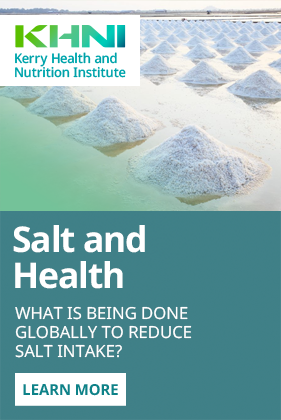Workshop hosted by ILSI North America in September 2015
Extensive debate continues on how to lower sodium intakes of the population given that previous campaigns, related to labeling and education, have had minimal impact. The workshop objective was to connect the dots with the nutrition and public health community on why sodium reduction has been so challenging due in large part to the variety of microbial and functional roles sodium plays across different food categories. The workshop provided greater knowledge and appreciation of these challenges.
The workshop broadened the dialogue and presented what we have learned in the last 5 years since the release of the Institute of Medicine’s Strategies to Reduce Sodium Intake in the United States Report about the functional challenges with sodium reduction. Speakers included the USDA Undersecretary and Chief Scientist Catherine Woteki, PhD, and FDA Office of Food Additive Safety scientist, Casey Heintz, and experts from the Monell Institute, academia, and industry. The workshop provided an opportunity for nearly 75 experts including microbiologists, food scientists, public health professionals, and nutritionists to come together and discuss current initiatives, potential technologies, and how their challenges vary between sectors. Attendees included experts from FDA, USDA, CDC, NIH, Health Canada, the New York City Department of Health, Institute of Medicine Food & Nutrition Board, American Heart Association, Academy of Nutrition and Dietetics, Institute of Food Technology, among others.
The recommendation from the nutrition community has been to lower sodium in incremental steps so better taste acceptance is achieved in the lower sodium product. However, from a microbial food safety perspective, small changes in a product’s formulation requires that a new process validation is undertaken by the manufacturer for the new product formulation which requires sufficient time and resources depending on the product category.
Discussion focused on the challenges faced when reducing or replacing sodium in foods, including technical challenges such as flavor profiles, unwanted chemical reactions and changes in texture; microbiological challenges such as decreasing water activity and reducing growth of pathogens and food spoilage organisms; and regulatory challenges and implications associated with replacing sodium chloride. Questions raised during the workshop wondered if consumers are willing to accept shorter shelf life for lower sodium levels and if an unintended consequence is increased food waste? In the effort to safely reduce sodium, the experts made recommendations on where scientific research is needed in order to make recommendations leading to improved public health.
The workshop provided an outline of potential next steps in how to approach this enormous public health challenge in a systematic manner. With such a complex task at hand, even small steps are incredibly important and are the most realistic way to make progress.
Workshop Videos & Presentations
Sodium Reduction – A Practical Path Forward
Introduction to Functional and Quality Applications of Sodium
Texture/Mouthfeel in Grain Products
Regulatory Considerations (Claims / Standards of Identity)
Case Study: Regulatory and Policy Considerations of Sodium Reduction in Dairy Foods
Introduction: Salt and Sodium Preservatives for Microbiological Stability
Processed (Cured and Deli) Meats
Microbial Considerations in Reduced Sodium Cheese and Other Dairy Products



